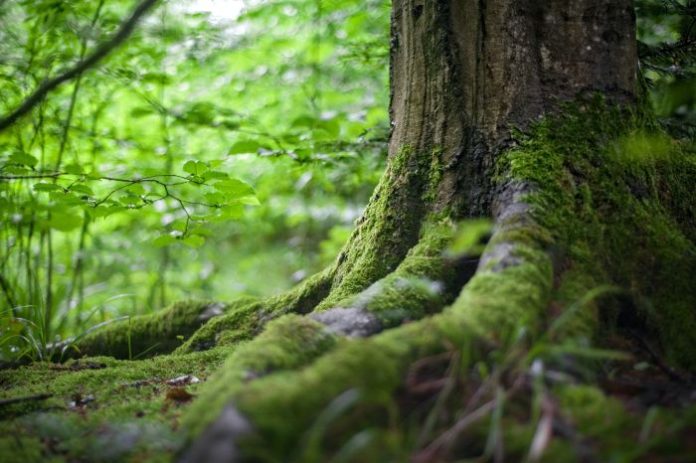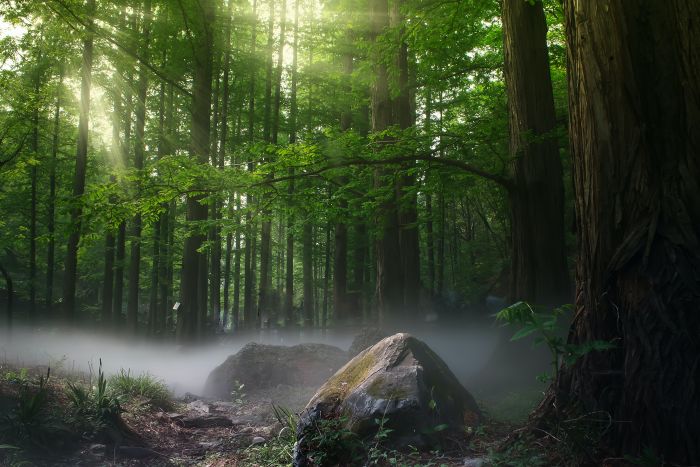
Since ancient times trees have acquired a special meaning for men, who venerated them for their function of connection between the earthly and the otherworldly dimensions, and worshipped them as true gods. In the woods, man immediately found shelter, took care of himself, used the fruits of the trees as a source of nourishment and wood as a building material; it is precisely from a tree struck by lightning that, it is thought, the first fire has sprung, thanks to which man was able to warm up, defend himself from wild animals, cook the food and then melt the metals. The forest has always also had a therapeutic role, being the place where men could heal their soul and be reconciled with nature and, therefore, with themselves.
This is what Antonio De Bona (naturalist and forester from Lucania) talks about in its first volume of “Alberologia” (Osanna Edizioni, 2015), in which he traces the history of trees and the importance that they have always had for the human being, starting from mythology and philosophy. In fact, just delve into literature, art, history, legend, to find any reference to trees, woods or forest: from the dark wood of Dante (night and dark scenery that opens the Divine Comedy) to the enchanted Arden’s forest of the Shakespearean comedies, where fantasy and reality coexist and merge; from the tree of life which, according to Christian tradition, God placed in the Garden of Eden together with the tree of knowledge of good and evil, to the tree of life made by the Austrian painter Gustav Klimt, symbol of renewal and rebirth, element of conjunction between heaven and earth, between the conscious and the unconscious.
The interdisciplinary links that analyzes De Bona in “Alberologia” are many and also include chromotherapy (science that studies colors for the treatment of certain diseases), “silvotherapy” (therapy process that uses the forest as a body and mind care), numerology linked to plants and even the influence of trees on birth cycles during the solar year (a sort of tree horoscope). Another interesting aspect of the book is dendropsychology (from Greek dendron, tree): De Bona tells us that Evi Crotti (psycho-pedagogist and founder of the “Graphological School Crotti” in Milan) in her book “And you, what tree are you?” he resumes a psychological test of the ’50s conceived by the Swiss scholar Emil Jucker, which was developed and implemented only later by the German psychologist Karl Koch, according to which the image of the tree would recall the image of the human being, which therefore is able to recognize itself in it. So the interpretation of the drawing made by the person would lead to reveal the most hidden aspects of his personality and his deepest self, but also past traumas, ideals and aspirations.
Soon I will have the pleasure of addressing and analyzing all these links (and many others) together with De Bona during a series of articles dedicated to “Alberologia”, with the intention of making as many people as possible reflect and raise awareness on the importance that trees have always covered for all of us, today more than ever, especially in the light of recent developments in Cop26 (the 26th United Nations Climate Conference, held in Glasgow, in Scotland, from 31 October to 12 November).
In the fight against climate change, which we are fighting today, in fact, trees are our main allies, as they perform the valuable function of absorption and fixation of CO2 through a natural process, that of photosynthesis chlorophyll, that makes them real carbon tanks (carbon sink). Therefore, protection of existing forests and restoration of the degraded ones it is made necessary, and it is precisely for this reason that the European Union has set itself the goal to expand the forest area planting three billion trees by 2030. They look like huge numbers but they’re not if we think that only in the last two centuries, we felled about two thousand billion trees (one third of all trees that ever existed on the planet) to obtain material but above all to make room for the cultivation of animal feed and livestock feed.

Our survival on Planet Earth, therefore, has always been closely related to trees and cannot disregard them. Woods and forests around the world are an immense treasure trove of biodiversity and play roles of primary importance, both from a biological and economic point of view (increase hydrogeological safety, reduce the impact of floods and inundations, consolidate the soil by reducing landslides and subsidences, stop the desiccation of soils, erosion and desertification and protect from heat waves and extreme heat) that make them an immense heritage to protect and preserve.






































